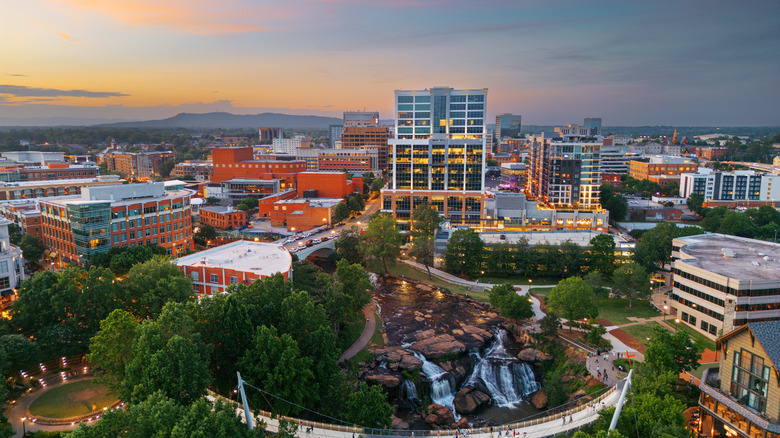
As costs rise in nearly all sectors, from housing to groceries and utilities, the concept of living frugally seems increasingly unattainable for many Americans. With the looming threat of tariff hikes, financial constraints are likely to tighten even further. As economic pressures build, many are contemplating relocating to more affordable cities in pursuit of improved living standards and lower expenses.
One such location garnering attention is Greenville, South Carolina, as highlighted by the U.S. News & World Report’s Best Places to Live and Retire. Nestled in the foothills of the Blue Ridge Mountains, it surpasses cities like San Antonio, St. Petersburg, and Nashville in terms of affordability and charm. Greenville is ranked as the 200th best city to live in, offering a cost of living approximately 7% below the national average, with lower housing costs significantly contributing to its allure.
What you’ll pay to live in Greenville

From renting to owning a home, Greenville excels at offering affordable housing options along with manageable daily expenses. According to RentCafe, the city’s average housing costs are 27% below the national average and 11% below the state average. The site reports the average monthly rent in Greenville is $1,570, and homes are sold for an average of $336,731; however, prices have sharply risen over the past five years. In addition to home prices, South Carolina’s property tax rates are among the lowest nationwide. This helps decrease the overall cost of homeownership, encouraging more people to buy rather than rent. In fact, over 72% of Greenville residents own their homes, based on the latest data from the Federal Reserve Bank of St. Louis.
Additional savings can be found in utilities, which are about 9% lower than the national average, and transportation costs, which are about 6% lower. Groceries are also slightly below the national average, further aiding households in stretching their budgets. These savings on everyday essentials make Greenville a wise choice for those seeking to live frugally without overspending.
What to know before moving to Greenville

Beyond affordability, Greenville offers a high quality of life that continues to attract working professionals and retirees nationwide. For professionals considering relocation, the area boasts a low unemployment rate and a high median household income of $73,817, according to U.S. News & World Report. While major employers are in manufacturing and healthcare, the tech industry is also expanding, with companies like Synnex and Cisco having offices in the city.
For those seeking to enjoy their retirement years, Greenville provides ample opportunities to stay active and engaged. The city features a charming downtown area with local restaurants, shopping boutiques, and museums, alongside year-round activities such as pickleball, scenic nature trails, and community festivals. Best of all, retirees can enjoy a combination of small-town charm and big-city benefits without burdening themselves with high living costs, thanks to Greenville’s accessible cost of living.






